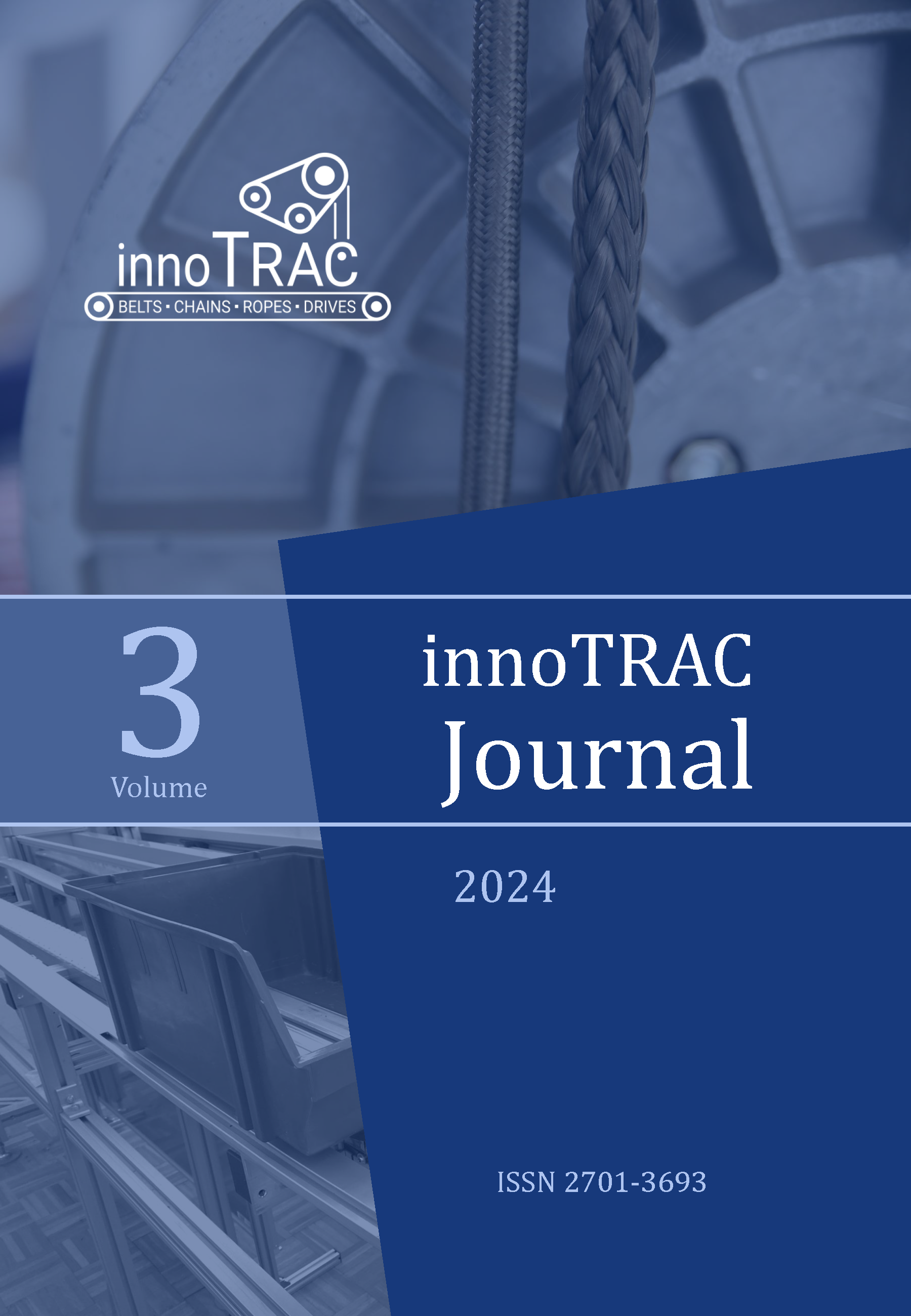Approaches to Chain Drive Design Using Numerical Simulation
DOI:
https://doi.org/10.14464/innotrac.v3i1.752Keywords:
MBS (Multi-body simulation), Multibody Dynamics (MBD), System Simulation, numerical simulation, overhead conveyor system, chain drive, complexity managementAbstract
The increasing integration of retail and Direct-to-Consumer (D2C) models has significantly increased the importance of pouch sorters in intralogistics. The centerpiece of these systems is the chain drive. Calculating the forces acting on the chain is complicated due to the large-scale construction and the numerous interacting components. A major challenge in determining the chain forces from the different subsystems lies in accounting for dynamic processes such as startup procedures, pouch oscillations, deviations from ideal operation and geometry, and emergency stops. Current calculation methods rely on quasi-static approaches and empirically derived coefficients that inadequately represent or completely ignore these dynamic processes. This paper addresses these issues by first analyzing the current calculation methods for this problem and then exploring the potential for knowledge transfer from other areas of mechanical engineering. The second part focuses on depicting system dynamics through numerical simulations. The numerical models used in this process are challenging to handle due to the high modeling effort and complexity. Thus, the paper presents approaches to manage this complexity. The results highlight the gap between current and required calculation capabilities. Numerical simulations demonstrate how this discrepancy can be bridged. The developed complexity management approaches provide valuable insights for further research, which will be pursued in a Ph.D. thesis.
Downloads
Published
How to Cite
Issue
Section
License
Copyright (c) 2024 Patrick Kröpfl, Alexander Ortner-Pichler, Maximilian Steger, Christian Landschützer

This work is licensed under a Creative Commons Attribution 4.0 International License.
All articles will be published open access under the license Creative Commons Attribution 4.0 (CC BY 4.0).

